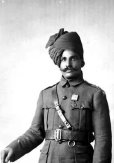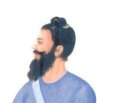Exploring the Multifaceted Dimensions of Guru Nanak's Educational Philosophy
Exploring the Spiritual and Historical Significance of Guru Amar Das Ji's Journey
One soldier, Gobind Singh, earned the Victoria Cross for delivering urgent messages despite having three horses shot under him while he did so and completing his journeys on foot.
Long hair helps Sikhs feel a connection to their Gurus. It's a physical similarity they share, reminding them to embody the qualities their Gurus represented.









